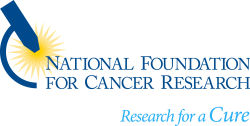 DelmarvaNow.com recently published an article titled “To control health care costs, use less care.” It sounds like a ridiculously obvious statement, but it does make sense. The easiest way to reduce one’s medical costs is to not require care in the first place. Preventive care may help certain patients avoid costly, potentially life-threatening health conditions. A report issued this month by PriceWaterhouse Coopers predicted that more money will be invested in preventive care over the next five years. The healthcare reform bill even earmarked $15 billion over the next 10 years to be spent on prevention.
DelmarvaNow.com recently published an article titled “To control health care costs, use less care.” It sounds like a ridiculously obvious statement, but it does make sense. The easiest way to reduce one’s medical costs is to not require care in the first place. Preventive care may help certain patients avoid costly, potentially life-threatening health conditions. A report issued this month by PriceWaterhouse Coopers predicted that more money will be invested in preventive care over the next five years. The healthcare reform bill even earmarked $15 billion over the next 10 years to be spent on prevention.
Companies such as Inovio Biomedical and GenVec are developing preventive vaccines for cancers and infectious diseases, but until those hit the market, it looks like lifestyle changes and screenings are the primary options for preventing disease. U.S. Preventive Medicine offers a variety of prevention and early detection products aimed at reducing healthcare costs and giving patients “more good years.” The company uses a comprehensive health assessment to identify patient-specific health risks and formulate a personalized prevention plan. U.S. Preventive Medicine also offers a program for chronic disease management. Patients receive a customized action plan designed to improve compliance and help patients better manage their conditions. The program covers diseases including asthma, diabetes, hypertension and HIV/AIDS.
Eliza Corporation of Beverly, Mass., uses technology to encourage patients to stay on top of their care. Phone calls, emails and texts are tailored to the individual’s needs and demographics. The company’s ElizaLive platform, which went into use about a year ago, helps them gather additional information about patient behavior to create more relevant and persuasive messages for their clients. According to Eliza Founder and President Alexandra Drane, the company’s customer base used to consist primarily of health plans, disease management companies and pharmaceutical companies. More recently, Drane has seen a shift toward employers who wish to motivate their employees to take better care of themselves. The challenge is this: “How do you get folks to do the things that they should do anyway?”
Prevention is only useful if patients stick to it. A 2008 study published in the New England Journal of Medicine found that preventive programs largely failed to reduce costs, due in part to a lack of patient compliance. “It’s not a lack of information problem, it’s a prioritization problem,” says Drane. A patient may know that she needs to get a mammogram, but she keeps putting it off in favor of other activities. Suddenly, three years have gone by and she still hasn’t had a mammogram. Other factors such as cost, inability to get time off work, and fear of a scary diagnosis may also cause patients to slack on screenings. Drane says that the approach is critical as well. “A condescending, academic, paternalistic approach to tell somebody that they have to get something done isn’t successful.”
In addition to a healthy lifestyle and compliance with treatment regimens, diagnostics play a role in prevention. Health screenings can catch disease in its early stages, allowing the patient to undergo treatment and make the appropriate lifestyle changes before the disease progresses to a deadlier, more costly stage. Bionetek Corporation develops products to identify patients in the early, asymptomatic stages of coronary artery disease and other heart dysfunctions. The non-invasive testing procedure takes approximately 10 minutes, including report generation. Another company in this space is MTM Laboratories, which has developed products for the early detection of cervical cancer. Cervical cancer typically takes a while to develop and presents no symptoms in its early stages. MTM Laboratories has identified a biomarker correlated with a precursor to cervical cancer. It’s important to remember that preventive screenings come with a price tag, and certain types of screenings may be invasive or expose the patient to radiation. Providers need to balance risk with cost to determine whether a screening is really necessary.
What’s your take on preventive care? Is it our greatest hope for controlling healthcare costs? How does one persuade a patient to engage in better self-care?

